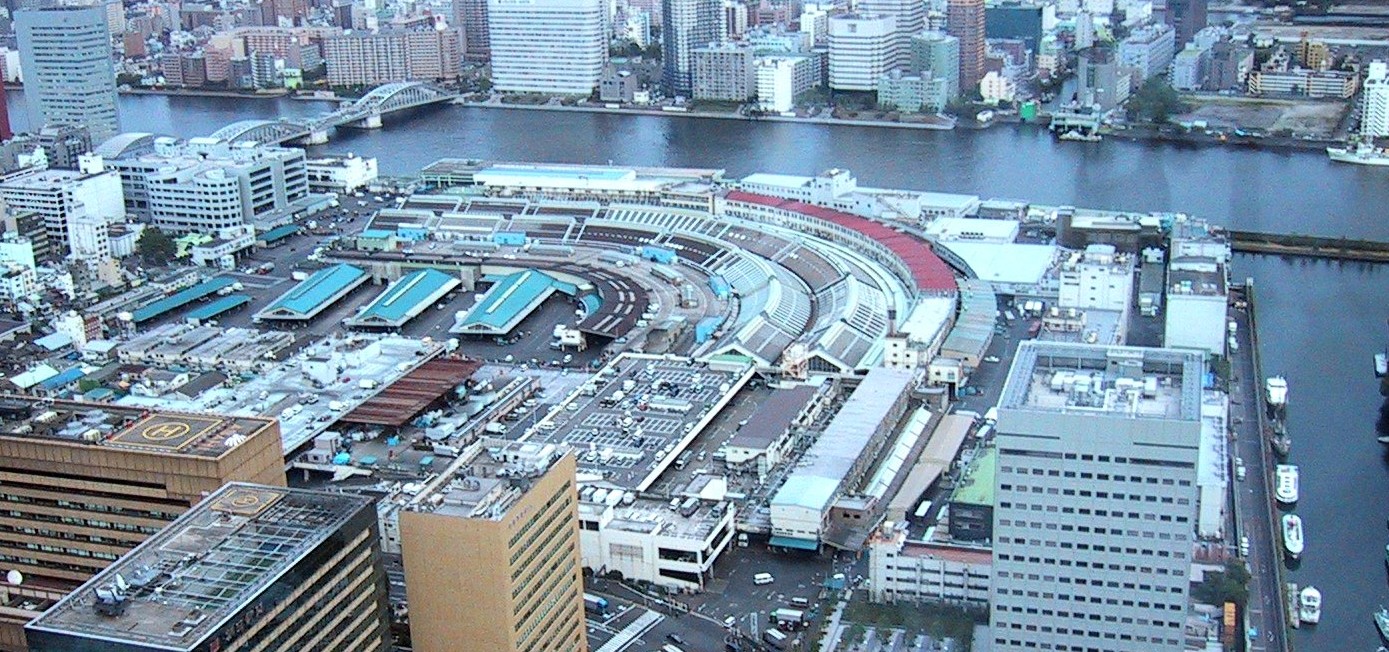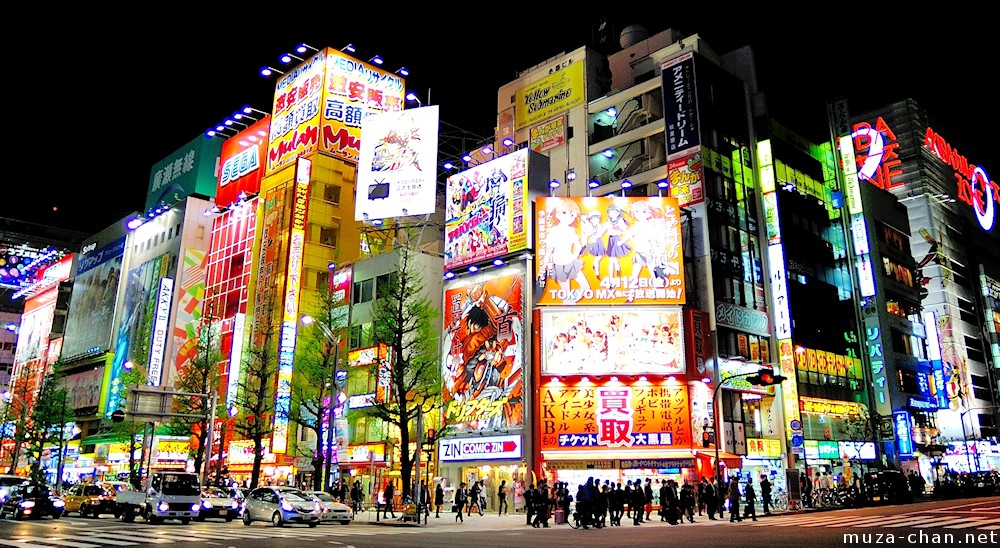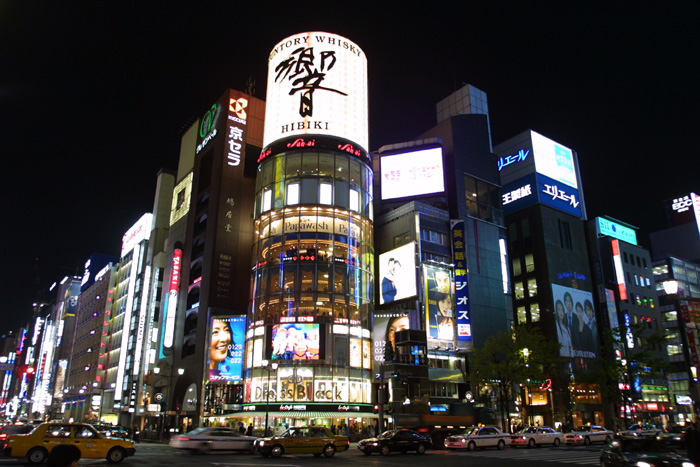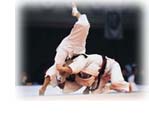Tokyo


Tokyo was originally known as Edo, meaning "estuary". Its name was changed to the current when it became the imperial capital in 1868, in line with the East Asian tradition to include the word "capital" in the name of the capital. During the early Meiji period, the city was also called "Tokei" a pronounced alternative to the same Chinese characters representing "Tokyo".
His formal foundation was in 1457 when a Uesugi clan member built the Castle of Edo. He established the government in Edo in 1603 and it opened the Edo Period.
Edo grew and by the eighteenth century became one of the most populous cities in the world.
After going through various disasters and changes, the emperor around 1868 moved from Edo Castle to Japan's Imperial Palace and established the name of Edo to Tokyo, the Eastern capital.
Currently Tokyo is known as the capital and one of the 47 Japanese prefectures. Situated on Honshu, having about 10% of the population. It is considered to be the most populous urban area and the largest and most important financial center in the world.
Technically Tokyo is not a city but a metropolis, similar to a Japanese city and consists of 23 districts, 26 cities primary, 5 secondary cities and 8 different villages. Each has a government that operates at the regional level.
It is estimated that the population of Tokyo increased by 2.5 million during the day due to students and workers from neighboring municipalities, who go to Tokyo to study and work.
Tokyo is the main political center, financial, educational, commercial and cultural Japan. Thus, Tokyo has the highest concentration of head offices of commercial enterprises, higher education institutions, theaters and other commercial and cultural establishments in the country. It has a public transport system highly developed, with numerous lines of trains, subways and buses as well as the Tokyo International Airport
Tokyo Places to travel
If you're about to go on vacation and has not yet
decided where you're going, I'm going to give you a valuable tip, go to Tokyo
and meet these monuments that have an incredible journey
Meiji Jingu

Address: 1-1 Kamizono-cho, Tokyo, 13
151-0053, Japan, JP
Tel: +81 033 379 5511
Tel: +81 033 379 5511
Built more than 100 years to pay homage to Emperor
Meiji and Empress Shoken, the sanctuary is a point of peace in Tokyo with a
sensational garden ranked seventh most visited tourist spot in the world.
Sensoji
Address: 2 Chome-3-1 Asakusa,
Taito, Tokyo 111-0032, Japão
Tel: +81
3-3842-0181
Inauguration:
645 a.d.
The
temple is the oldest of the Japanese capital and was dedicated to the
Bodhisattva Kannon, an icon of the Buddhist religion and owns more than
30,000,000 visitors, ranked as eighth most visited tourist spot in the world.
Tokyo Tower

Address:
4-2-8 Shiba-Koen, Tokyo, 13 105-0011, Japan, JP
Tel: +81 033 433 5111
Tokyo Tower stands at an impressive 333 metres / 1,093 feet, 13 metres / 43
feet higher than the Eiffel Tower. With an amazing view of the city, the Tower
became one of the most visited spots
Hanazono
Jinja

Address: 5-17-3 Shinjuku, Tokyo, Japan, JP
Tel: +81 033 209 5265
Tel: +81 033 209 5265
One of the deities of the shrine is
Yamato-takeru-no-Mikoto. Many people will visit this site, because they believe
it brings good luck for business
Kaminarimon (Kaminari Gate)

Address: Kaminarimon, Taito-ku, Tokyo, 111-0034, Japan, JP
Kaminarimon is the first and most impressive of two large gates, which lead to Sensoji Temple. This striking landmark gate was constructed over 1,000 years ago, and has since become the symbol of Asakusa.
Kaminarimon is the first and most impressive of two large gates, which lead to Sensoji Temple. This striking landmark gate was constructed over 1,000 years ago, and has since become the symbol of Asakusa.
Tokyo Imperial Palace is the main residence of the
Emperor of Japan. Except on Jan 2 (New Year’s Greeting) and Dec 23 (Emperor’s
Birthday), the palace buildings and inner gardens are not open to the public .
Only on both specific dates, visitors are able to enter
the inner palace grounds and see the members of the Imperial Family, who make
several public appearances on a balcony.
The Imperial Palace East Gardens , are a part of the
inner palace area and are open to the public.

Opening Hours : Daily except Monday & Friday 09:00am – 4:00pm ( Summer opens until
5.00pm )
By Subway : Tokyo Metro : Marunouchi Line
– Tokyo Station
Tokyo Metro : Tozai, Chiyoda, Marunouchi, Hanzomon Line –
Ōtemachi Station (exit C10 – closer to East Garden)
Toei Subway : Mita Line – Ōtemachi Station (exit C10 –
closer to East Garden)
Tsukiji Market , is the biggest wholesale fish and
seafood market in the world. It handles more than 400 different types of
seafood from cheap seaweed to the most expensive caviar, and from tiny sardines
to 300 kg tuna and controversial whale species.
The most interesting part is the Tuna Auction. It is
limited to 120 visitors per day. Viewing tickets are issued on a first come, first serve basis beginning at 4:30 AM at
the market’s Fish Information Center, located next to the Kachidoki entrance.
(Not the main entrance)
The first 60 ticket holders are able to view the auction
from 5:25 AM until 5:50 AM, while the other 60 ticket holders can view the
remainder of the auction from 5:50 AM until 6:15 AM.

Opening Hours : Daily except Sunday & alternate Wednesday: 04:00am – 11:00am
By Subway : Tokyo Metro : Hibiya Line –
Tsukiji Station
Tokyo Skytree
One of Tokyo’s newest landmark
& attraction, the 634 meter Tokyo Skytree is the tallest tower in Japan.
The tower is the primary television and radio broadcast site for Kanto region.
The Tokyo Skytree is its two
observation decks Tembo Deck & Tembo Gallery which offer spectacular views
of Tokyo city skyline. On the base of Tokyo Skytree host a large shopping complex
with aquarium.
Opening Hours : Daily 08:00am – 10:00pm
By Subway : Tokyo Metro Hanzomon Line
& Toei Subway Asakusa Line : Oshiage Station
Akihabara is the largest town
collecting all kinds of electronic appliances and devices in the world. The
products at the very top of technology are always abundantly available here.
Over here, staffs master 20 languages of the world.
Communication here can be going on smoothly without any problems. Customers can
easily purchase the overseas model products.

Opening Hours : Daily 11:00am – 9:00pm
By Subway :
Tokyo Metro : Hibiya Line – Akihabara Station
The Ginza is considered the high fashion center of the
city and contains many upscale shops and restaurants.
It is one of the most expensive real estate in the world.
During weekend, the street will be closed to motor traffic during the day hence
becoming a Pedestrians’ Paradise.

Opening Hours : Daily 10:00am – 10:00pm
By Subway : Tokyo Metro : Marunouchi,
Ginza & Hibiya Line – Ginza Station
Kabukichō ( is an
entertainment and red-light district in in north east Shinjuku beyond
Yasukuni-dōri Avenue.
It is very famous for hostess bars, host bars, love
hotels, shops, restaurants, and nightclubs, and is often called the “Sleepless
Town” .
The district’s name comes from late-1940s plans to build
a kabuki theater: although the theater was never built due to financial
difficulties, the name stuck.
Opening Hours : Daily 7:00pm – 3:00am
By Subway : Tokyo Metro : Marunouchi Line
– Shinjuku Station
Toei Subway : Oedo & Shinjuku Line – Shinjuku Station
Tradicional Japanese Sports
Sumo: Sumo is a
traditional combative Japanese sport that is well known throughout the world.
Most rikishi (Sumo wrestlers) are professional competitors weighing 100 to 200
kg.
Rules are simple compared to western-style wrestling: two competitors wearing mawashi (silk belts) fight in a ring 4.5m in diameter and placed on a square mound. When any part of a competitor’s body, except the sole of the feet, touches the ground or goes out of the ring, he loses the bout.
The professional sumo tournaments take place six times a year for 15 days each in January, May and September at Ryogoku Kokugikan in Tokyo, March in Osaka, July in Nagoya and December in Fukuoka.
Kendo:Kendo is
Japanese-style fencing, which originated from kenjutsu, the most important
martial art of the samurai. In the match, the competitor wears special
protective gear and strikes at the opponent’s head, chest or hand with a bamboo
sword.
Judo:Judo is
well known throughout the world as a Japanese combative sport. The basic
principle of Judo is a self-defense technique that makes use of the opponent's
force. The player wears a coloured obi (belt), to show his or her level of
ability, with white being for beginners and black for advanced.
Karate:Karate is
a combative sport that came from China through Ryukyu Kingdom (present day
Okinawa). The competitors of the match do not wear any kind of protection and
use only their hands and fists. Compared to other combative sports, karate is a
more practical martial art.
Aikido:The basic
principle of Aikido is “Do not fight force with force”.
It is a sport that only practice forms for the sake of forms and is therefore
not so rough as Judo or Karate. Aikido is excellent as mental training or as a
fitness sport, and has become especially popular with women and senior
citizens.
Typical Foods of Tokyo
Tokyo currently
boasts a wide variety of cuisines from countries all around the world. Tokyo
has it all, from global cuisine to fad foods, from rare finds to simple eats,
and from relatively cheap meals to extremely expensive haute cuisine. Tokyo, or
Edo, as it was formerly called, is constantly brimming with new styles of
cuisine and foreign foods, yet Tokyo is still firmly rooted in the food culture
developed a long time ago when it was still referred to as Edo. Much of Tokyo's
cuisine doesn't so much represent old style Japanese food as much as it
represents a cuisine loved by all Japanese people. In Tokyo, food culture can
best be described as a mix of both old and new cuisines.
Edomae-Zushi
Originally referred to
sushi prepared with fish caught in Tokyo Bay, but now refers to sushi cuisine
focusing on nigiri-zushi as well as sushi using carefully prepared ingredients.
Kabayaki
Kabayaki is a dish made
with unagi. Unagi can be eaten all throughout Japan, but the Edo style involves
cutting open the eel from its back, removing its head, bones, and organs, then
steaming it.
Tempura
Tempura refers to fish, vegetables, etc., dipped in
batter and fried. Edomae tempura refers to seafood caught in Tokyo Bay, such as
Japanese tiger prawns, conger eels, squid, etc.
Moti
The
moti is a sweet of rice, is prepared with a speffical rice.
Tokyo has a humid
subtropical climate. June to August, we can see the summer that is very hot due
to a low humidity but, while winters that is on December to February can get
fairly cold. August is the warmest month of the year with averages 27°C and
January is the coolest month reaching 6°C and snowing so much, but it’s common
there and for them. The summers can be rainy and
Tokyo's rainy season usually lasts from early June to late July. Even with the
rain, (that is not constant) Tokyo still gets plenty of sun in this period. The
best time to visit Tokyo is in the shoulder seasons of spring and autumn.
During the winter, air
pollution in Japan is particularly bad since the polluted air comes not only
from industrial and vehicle emissions within Japan, but also from polluted air
masses that are derived from China. During the winter, cold, dry air moves in
from China as well as from Siberia and passes over the warm and humid Sea of
Japan. As a consequence, the western side of Japan receives much higher
precipitation (i.e. snowfall) totals than the eastern coastline.
Furthermore, the
majority of the western side of Japan receives large amounts of wet deposition
acidic compounds (i.e. acidic precipitation). In fact, the worst region in
Japan for acidic precipitation occurs along the central western coastline
around the Toyoma and Niigata Prefectures.
W8-2 Teacher Fabián Wizard Centro
Cristiano
Matheus
Renan
Silvia
Tatiana
Leonardo











0 comments:
Postar um comentário